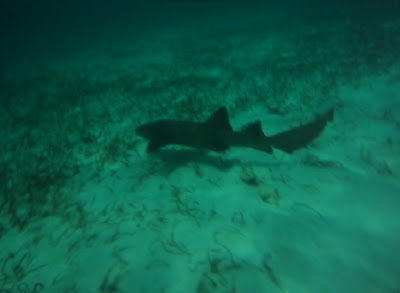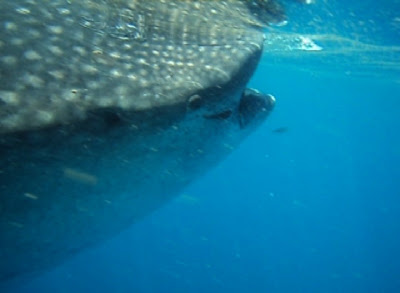 A lot of tourists come to Belize just to dive The Great Blue Hole. During my travels in Mexico I had spoken to various people about the dive and the general consensous was to not bother, there was not much to see and it is an expensive site to visit because you need to pay an entrance fee just to enter the marine park it resides in.
A lot of tourists come to Belize just to dive The Great Blue Hole. During my travels in Mexico I had spoken to various people about the dive and the general consensous was to not bother, there was not much to see and it is an expensive site to visit because you need to pay an entrance fee just to enter the marine park it resides in.
Seeing as I had already did a days worth of diving on the reef of Belize and I had been sitting around doing nothing for the best part of a week. My friend Andre said that he was diving at The Blue Hole so I decided, why not! I’ll go and check it out, at least then I can say ‘I’ve done it!’
The Great Blue Hole is a sink hole that started to form over 100,000 years ago when it was above sea level. Centuries of time formed stalactites and stalagmites of limestone until after the last ice age, sea levels rose and the sink hole became a perfectly round hole in the barrier reef just off Belize. The hole is over 300 metres (984 ft) across and 124 metres (407 ft) deep. The dive was to be a short but deep dive. The stalactites and stalagmites are at around 40 metres. It was to be my deepest dive yet. Most people get what is called ‘Nitrogen Narcosis’ once you get to 30 metres and beyond. A kind of underwater drunkenness that happens when your body is affected by the water pressure.
We descended into the darkness, a deep blue with no bottom in site. The wall inside was surreal, quite unlike anything I’ve seen. We sank to 40 metres to see the ancient formations. Bold and beautiful, the seemingly perfectly intact structures was quite something to see. I swam between a few of the massive pillars and back out again. Floating back to take in the scenery I felt like I was on another planet. There was a certain special feeling about the place, somewhat eerie and definitely otherworldly. I loved just taking in the overall scene of the darkness below me, the seemingly vertical wall. Perhaps I did have a mild case of Nitrogen Narcosis as I was feeling quite blissful in this world below.
As we started to ascend to around 20 metres, we started to see large dark slender formations swimming around us. They were Reef Sharks. They kept to a safe distance, but one did come to about five metres from me. They are just awesome to see. There was also some very large Groupers as we got closer to the surface.
I have to say I quite enjoyed the experience of diving The Great Blue Hole, and I’m glad that I had the opportunity to see what the fuss is about.
See more pics of The Blue hole here…
Great Blue Hole pictures









